For many, a wireless world is the Holy Grail of technology. It’s a direction we’ve been heading in for a while, even if it’s at a slow pace. What started with Bluetooth and WIFI, has spread to national communications networks and device charging.
When it comes to audio, though, most of the tech we use has a major drawback: latency. If you want to witness for yourself, try DJing through a Bluetooth speaker, or use a wireless microphone. Any successful solution to this issue would undoubtably help spearhead a movement for truly wireless headphone monitoring, which I’m sure we can all see the benefit of.
Startup Natus Labs hopes to be that solution with the Natus One Wireless Headphone Link, a discrete, portable, and battery powered wireless bridge between your music source and your headphones. Basically, you have two boxes, about the size of a large tic tac pack, one as transmitter, the other as receiver. Since they’re paired, you should get an easy-to-set-up link with low latency. And by ‘low latency’, Natus Labs are saying 16ms on completely uncompressed audio, which is well below what you’d get from all but the pro-level tech.
Both units are also meant have a stated 24 hours of battery life for play time, which is more than enough for even the most hardcore of mixing sessions. Oh, and you can also have up to three receivers streaming from one transmitter.
While the Natus One Kickstarter crowdfunding campaign is asking for $125,000, I’ve been assured this is a real crowdfund, and not just a means to market preorders. I take this to mean it’s a passion project that needs help to get off the ground.
My (our) take
When this press release got sent around the Slack channel, everyone perked up, displaying interest in the potential of the technology. To be clear, there’s nothing technically ‘new’, or ‘ground breaking’ with the tech that drives the wireless connection, but it looks to be the first time its implemented in this way in such a practical setup, aimed specifically at DJs.
Personally, if the crowdfunding does pan out, I’d love to see it built into mixers, or maybe a means to provide a way to modify the mixer yourself. Needless to say, on paper we’ve been impressed with the product and idea, but a real world test drive would see how practical it is. For that, we need to get hold of a set, which we will try our best to do!
Your take
Would the Natus One Wireless Headphone Link be useful to you? Do you think 16ms is perfectly manageable latency for DJs?
Hit up the Natus One Kickstarter page to support the project, if it looks like your bag.


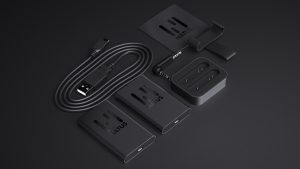
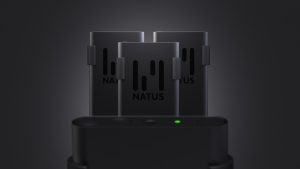
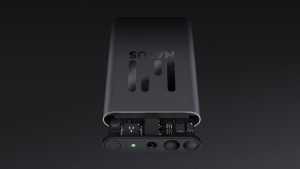
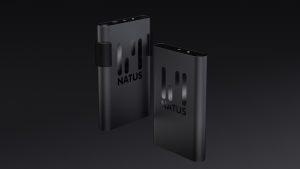
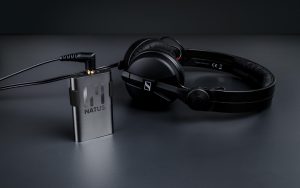
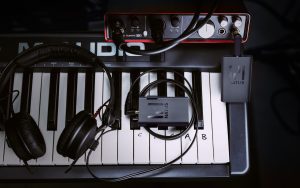
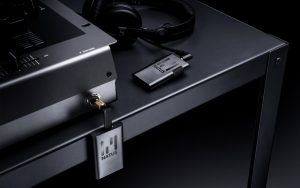
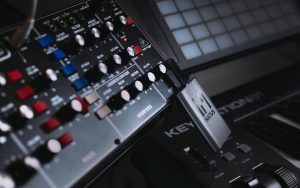



16ms equals .04656 beats of latency at 175 BPM (DNB). Which doesn’t sound like much, but that means you will have a drift notice of 64 beats (rounded to be in musical time). I guess only testing this device in person would tell if I would be happy with using it in a live setting, especially while finger drumming or playing the keys.
Having reviewed the bluetooth abilities of the Mackie Thumps, I’d say that uncomplicated mixing is fine with wireless, But for anything like scratching or cue pads bashing where hand, ear, and eye coordination counts, that difference will matter.
Hi Mark, as i wrote Anthony above – there are certainly some use cases that we dont recommend like vocal tracking. On paper 16ms sounds right on the edge of whats acceptable for scratching etc. however in our tests we have nothing but great feedback (some in the videos). We believe it might come down to the fact that our latency is fixed 16ms – we ALWAYS sends the same data frames so its completely locked, and somehow that makes a big difference for precision use. We’re honestly not neurologists, but DJs and tech nerds – we just know what our testing with DJs like DJ Toltech (who’s going to represent USA at DMC in London in a few weeks) tells us :)
Hi Anthony, for most DJ usage its completely transparent, and in our testing we’ve found that even super fast turntablists have absolutely no issues using it – check some of the videos on the Kickstarter page.. these guys are not playing around. There are definitely use cases that we don’t recommend such as monitoring vocals, and there is no doubt that some piano/drumpad players will feel 16ms. For homestudio use we really see it as an addition – a real nice to have in most situations and then there are going to be situations where you cant live with any latency, just like you probably never do vocal monitoring through your DAW while recording.
You are most likely correct. There have just been so many wireless headphone attempts in the past, that we just don’t feel comfortable purchasing anything wireless+audio without first testing it out ourselves. If the latency stays locked at 16ms and doesn’t drift, than it is a small enough latency, that it is easy to adjust to. To put it in perspective, the latency from movement to action to audio output on CDJ and XDJ’s is 18ms (overall), yet DJ’s still swear by them.
I’m not a turntablist, so that latency sounds pretty workable to me, but I’m very skeptical of anything wireless when it comes to live performance. That being said, assuming the latency and connections are reliable, looks to me like the standout feature here is being able to connect three receivers at once! I’ve set up systems in the past with headphone distribution mixers for back to back sessions and such, but those often end in a tangled mess, and since I’m not getting a Tour-1 anytime soon, I’d be willing to invest in a pair just for being able to set up multi-dj mix sessions.
I used wireless headphones for scratching. It was almost 20 years ago. When I started the turntablism and I did not have any DJ headphones so I used wireless hifi headphones. I do not know what kind of technology was used but I assumed that it was comparable to analog wireless microphone.
The fact that you can have up to three receivers streaming from one transmitter sounds like this would be something really good for all the new mini synth devices out there like the Teenage Engineering Pocket operators!
The low latency is key and 16ms sounds very good, but what happens when you’re using digital vinyl system (DVS) which has it’s own latency and then add the wireless audio latency again. I only ask because the videos of the scratch DJs seem to using vinyl (honestly I just skipped through the videos so maybe I missed something). I am not a scratch DJ and I am just interested / curious if this system has been tested with a DVS.
I know in the main video states that this is an audio only solution but there is scope there for a wireless midi / osc function. Do you know if there are any plans to include a version with midi / osc?
Thanks
Nelson
You’ve got it backwards… You’d have one synth with a transmitter, and three sets of headphones hearing it.
What I meant was that the pocket operators receive a tick through the headphone jack to keep them in sync. So you could have 4 operators all in sync wirelessly. The main operator (transmitter) and 3 friends connected via the receivers.
Yes each would still need to be connected back into a summing mixer or better yet transmit back to the summing source :)
I was just thinking of another use for the transmitter and receivers.
No, honestly there are enough things that add latency into the chain. DSP systems add latency as well, digital mixers can as well (maybe the newest models are less perceptible with that, but there is still a latency introduced even by the A/D D/A conversions alone). Add that to someone using DVS, and then tack on this new headphone latency, and cumulatively it could add up to be something significant.
I’m going to take a hard line here: we already have too much stuff that adds latency to audio in the realm of digital. We do not need another item that adds 16ms.
Side note, if you delay the booth monitor by the same amount as the headphones, you can phase align them pretty well and offer a better experience for DJs using the setup. Also, 1 foot of distance away from the booth monitor is equivalent to 1ms of latency.
What I also thought. 16ms might not be that much, but if added to other factors it could amount to just-just too much.
i can’t imagine real life usage for djing, like what would you do with this new “freedom”?
Dance like nobody is watching.